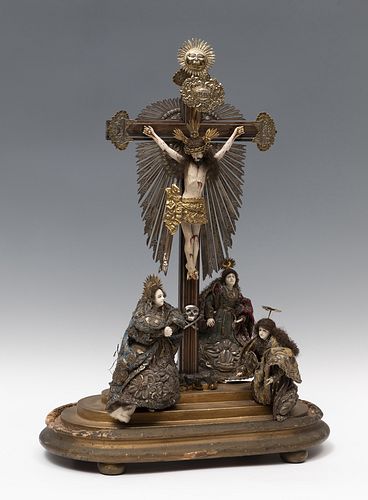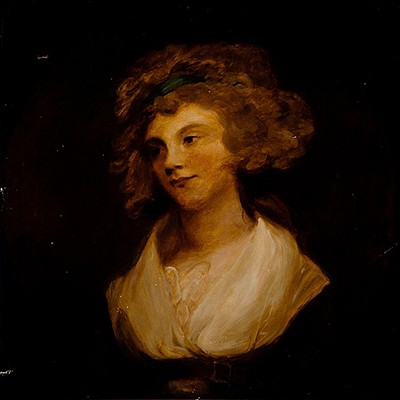Calvary; Hispanic-Filipino School; XVIII century. Silver ivory and silk embroidered with silver thread.
About Seller
Carrer Aragó 346
Barcelona
Spain
Setdart Subastas was born in 2004 and is currently the first online art auction in Spain with solidity, prestige and reliability guaranteed by our more than 60,000 users. Setdart has a young, dynamic and enterprising team ready to successfully manage the purchase and sale of art works through custom...Read more
Two ways to bid:
- Leave a max absentee bid and the platform will bid on your behalf up to your maximum bid during the live auction.
- Bid live during the auction and your bids will be submitted real-time to the auctioneer.
Bid Increments
| Price | Bid Increment |
|---|---|
| EUR€0 | EUR€10 |
| EUR€200 | EUR€25 |
| EUR€500 | EUR€50 |
| EUR€1,000 | EUR€100 |
| EUR€3,000 | EUR€200 |
| EUR€5,000 | EUR€500 |
| EUR€10,000 | EUR€1,000 |
| EUR€20,000 | EUR€2,000 |
| EUR€50,000 | EUR€5,000 |
About Auction
Nov 25, 2021
Setdart Auction House sofia@setdart.com
- Lot Description
Calvary; Hispanic-Filipino School; XVIII century. Silver ivory and silk embroidered with silver thread. Measurements: 23 x 15 cm (Christ); 62 x 43 x 22 cm. The image of Christ crucified on a wooden Latin cross presides over the group made in ivory. The evident singularity of the figures that seem to be conceived to be dressed is added to the idea of the Calvary. Normally since the gothic art, extending the model until later times in the sculptural groups referring to the Calvary is usually represented the figure of Christ Crucified, the image of the Virgin normally in the right area, and St. John on the left side. However, in this sculptural representation we are presented with the figure of Christ on a cross with three nails and at his feet on the right the Virgin, who is defined by a greater halo with respect to the other two women who complete the group. As for the other ladies, these are Mary of Cleophas and Mary Salome. Through the maritime commercial routes the appreciated oriental products arrived to Spain, which satisfied the great demand of luxurious and exotic objects. Ivory, a material of luxury and high esteem, meant prestige, economic and social power for its owner, and the works of religious imagery worked in this material were especially appreciated, designed for private devotion and often donated by the powerful to religious centers as a sign of faith. The Hispano-Philippine works reveal a set of artistic influences that fill them with content. They are works of art made under the Spanish influence, filtered through America, and carved in the Philippines by both local and Chinese artists settled in the archipelago. The Sangleyes or Chinese of the Philippines, urged by the demand for Christian religious works, attended the Spanish orders having as models sculptures, prints or engravings sent from the metropolis (hence the variety of themes and iconographic models that have reached us today, a number that also gives an idea of their production), but without forgetting the features of the oriental anatomy. Thus, the eyes are slanted, with bulging eyelids made in double flange, configuring a face with protruding cheekbones that departs from the classical ideal of contemporary Europe, although somewhat sweeter than is typical in this type of Philippine pieces. These different characteristics, typical of their oriental origin, were highly appreciated in the metropolis.
Dimensions:
INV Number:
23 x 15 cm (Christ); 62 x 43 x 22 cm.
35273008 - Shipping Info
-
In-house shipping available. Please inquire at admin@setdart.com.
-
- Buyer's Premium



 EUR
EUR CAD
CAD AUD
AUD GBP
GBP MXN
MXN HKD
HKD CNY
CNY MYR
MYR SEK
SEK SGD
SGD CHF
CHF THB
THB

















